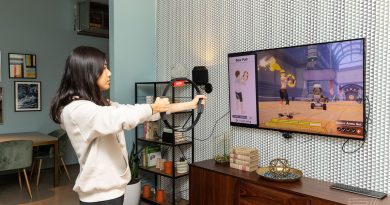How far have you gone for internet access?
The Verge’s Infrastructure Week focused partly on how dire the broadband problem currently is for Americans. On Monday, we showed you a map of the worst counties for broadband in the US — and on Friday, we closed the week by showing how satellite services like Starlink aren’t enough to close that gap.
But even for the people who do have high-speed internet access, many of them have done desperate things to secure access to it. Our team resides all around the US, and they’ve shared some personal tales below about their experiences getting (or failing to get) high-speed internet.
But we also want to know what lengths you’ve gone to for internet access. Did you have to plead with an unwilling internet service provider to branch out its high-speed service to your area? Did you resort to using a device in an unintended way to get internet access? Did you use any clever workarounds to improve your internet (or piggy-back on a neighbor’s)? Share your story in the comments below.
When I came back from college one summer, I found my mom had switched from dial-up to slightly faster RF-based internet. There was a little dish on our back porch pointed at the grain elevators in town (the largest building in the area). The internet providers were just a couple of nice young dudes who were using cable lines to string internet from the center of town to the grain elevators where they would then beam it out to people too far away to get DSL or cable. The internet was usually fine but would slow down or stop altogether if there was interference. Usually, it was a bad storm or heavy fog. But the worst was whenever the hay fields between the grain elevators and my home were harvested. It would kick up dust and leave me totally internet-less. I got very comfortable playing World of Warcraft in coffee shops and diners in rural North Texas. — Alex Cranz, managing editor
The internet at my parents’ house (where I’ve spent a good amount of the pandemic working, since my 200-square-foot apartment isn’t an ideal office) is mind-bogglingly slow. This is a problem for me as someone who reviews laptops, and especially gaming laptops, because I constantly need to download things. Red Dead Redemption 2 took almost four days to load onto my drive on my parents’ internet, for example, and it was bogging everything else down so much that I needed to find another solution. So I want to take this space to shout out the Congregational Church of Salisbury, which has allowed me to absolutely pummel their holy internet with piles of heavy downloads several times this year. There’s no experience more serene than spending the morning in an empty chapel, hearing the chirps of birds echo through windows and across the pews, feeling at peace with nature and God, as you download AAA game after AAA game. — Monica Chin, writer
Back in the days when getting access to data internationally cost a small fortune, a friend of mine came up with the ingenious workaround of using the free 3G connection on his Kindle as a workaround. He spent an entire summer using the basic browser built into his e-reader to load up Google Maps and find his way around. It was a painful process, and I don’t think he got anywhere particularly quickly, but it was better than having to pay the international roaming rates being charged at the time. — Jon Porter, news reporter
Being a freelance video professional and needing to upload large files means my internet connection can be the difference between spending a day to get a video online or a few minutes. Unfortunately, living in NYC means I pretty much only have one option for internet from the legacy cable provider (Spectrum). Like most cable providers, they offer decent download speeds but throttle the upload speeds to the same measly 30mbps across all their plans, and even then you rarely get the full 30mbps. I wanted fiber internet because it offers modern bandwidth for uploads, but there was little incentive for Verizon FiOS to run their service into the pre-war building I live in on the Upper West Side. I was determined, though, and went door to door to every resident in the building to get enough signatures showing interest in having a fiber option for internet. After getting a majority of the tenants to sign on and calling and writing to Verizon every week for almost six months, I was able to get them to coordinate with the landlord to install service to our building. Now an average video that would take several hours to upload can be put online in a few minutes. Being able to fix a problem or make a quick change to a video for a client allows me to accommodate client requests that many other producers would not be able to handle. My upload speed can be the real difference between getting the next job or not. — Liam James, producer on Decoder
I was studying in mainland China during a big crackdown on US websites in college. So I spent half the year playing a constant game of whack-a-mole with Tor and a series of sketchy (but faster) free web proxies whose names and links got passed around my cohort like we were sharing the passwords to a speakeasy. I’m lucky I didn’t end up with some kind of horrific malware, but on the bright side, it’s the only time I could imagine feeling cool and rebellious visiting Facebook. — Adi Robertson, senior reporter
My family didn’t upgrade from dial-up until around 2012, which meant that we also didn’t have Wi-Fi. Of course, I wasn’t going to let that stop me from getting Online, so I did what any preteen would do: grabbed my PSP 2000 and roamed around my neighborhood looking for unprotected hotspots. I ended up finding one right by our house (hi neighbors!), and eagerly connected to it. Thankfully, there was a tree in the exact perfect spot, where I was as close to their property as I could’ve been without technically trespassing. That unprotected Wi-Fi hotspot and my PSP’s web browser were my main access to the internet for about a year — I would hang in, on, or around the tree, surfing the internet.
I realize that this may mean I was one of the PSP web browser’s top users, and I know I had a few JavaScript bookmarklets installed, though I don’t remember what they did. I know that most of what I was doing were the types of things I didn’t want to or couldn’t do on the public desktop: setting up a secret MySpace account to talk to my fake middle school girlfriend and playing multiplayer games (though I usually couldn’t finish them, as the connection was, understandably, super flaky). — Mitchell Clark, news writer
Dial-up internet was the only option during my teenage years living on the outskirts of a small town in Ohio. We got service through CompuServe, and it showed its limitations when I needed to do pretty much anything other than using MySpace, Xanga, or GameFaqs for text-only gaming guides. I remember it took a week to download a 63MB trailer for Metal Gear Solid 3: Snake Eater on Kazaa. So, it was totally inadequate for playing online games like Gears of War on the Xbox 360, which all of my friends were playing at the time.
To get something that could even be considered high-speed internet at our house (I recall that speed being well under 500Kbps for download and upload speeds), I had to repeatedly call and plead with the local ISP to bring it out to where I lived, about 20 miles out of town. It eventually worked after a few months of persistence. I got my way, and I could finally play synchronous multiplayer games online for the first time ever. Shortly thereafter, a stranger online in Gears of War told me he was going to come to my house and kill me, so I quit playing it entirely. — Cameron Faulkner, writer
There are four rooms in my apartment. Living room —> Kitchen —> Bathroom —> Bedroom. Thick concrete walls between each of them.
My router is in the living room. It does not reliably reach the bedroom. If I leave the bedroom door all the way open, I might maintain a consistent signal.
I know I need to buy an Eero or something, but I keep thinking a better model will come out soon.
So instead, I bought a $30 Wi-Fi repeater and a long extension cable. I ran the cable from a power outlet in the kitchen out into the hallway (there are no outlets in the hallway) that leads to the bedroom. The cable is somewhat tactfully hidden around a doorframe using a series of tiny nails meant for hanging picture frames and thread to hold the cable in place.
The Wi-Fi repeater is now hovering near the ceiling, halfway between the router and bedroom. If I connect to it, I can get AOL-grade speeds in my bedroom.
It’s been there for 12 months now. I never use it.— Jake Kastrenakes, senior editor




